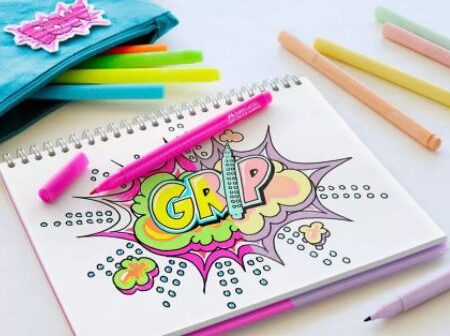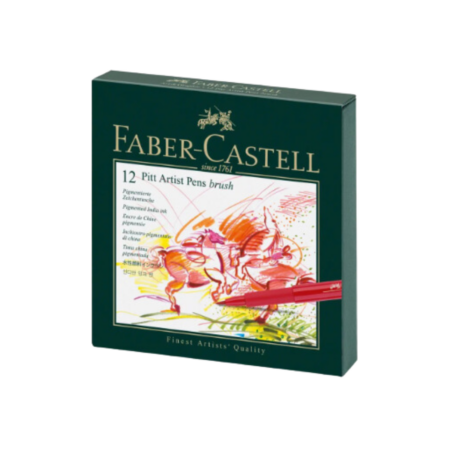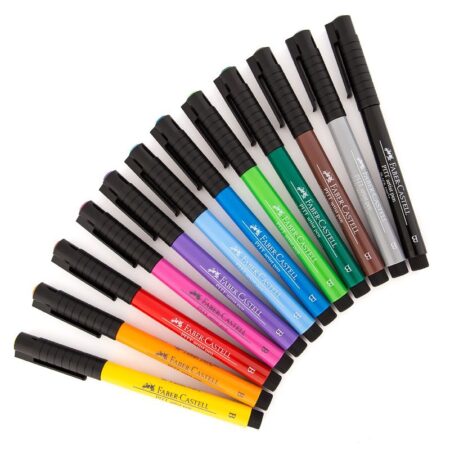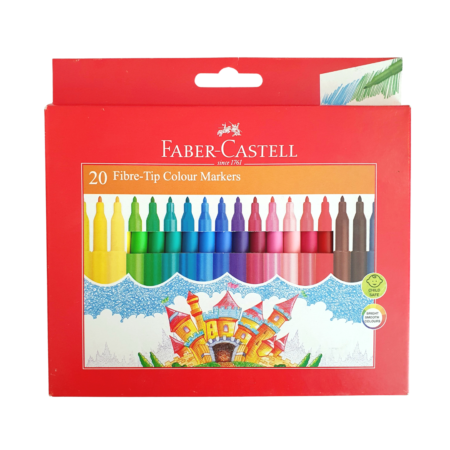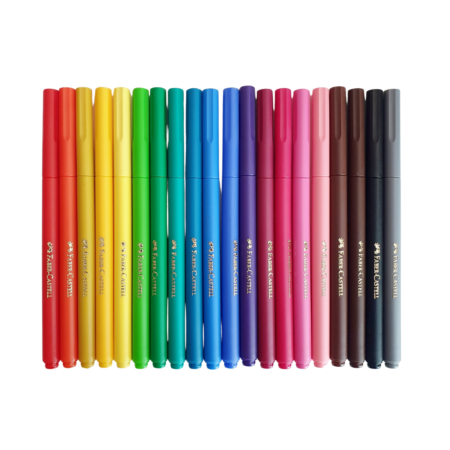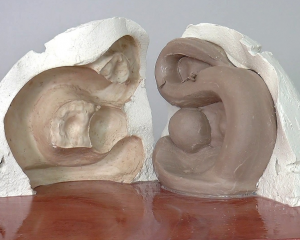Drawing with markers is especially popular with children, including designers, illustrators and artists. Marker is a relatively new means of drawing or writing that came into use in the early 20th century. The markers come in a variety of types and colors and there are many brands and manufacturers of markers around the world. There are markers on the market at various price levels, from simple and inexpensive markers to a series of unique and luxurious markers. The markers are very convenient for painting and painting and are among the common art materials in every home. Get to know the different types of markers and their properties along with drawing tips.
Facts and properties of markers and an explanation of different types of markers
Mascara consists of a plastic roll and inside it a spongy substance dipped in an ink mixture with water / alcohol / chemicals. The tip of the pen is attached to the sponge material and the paint comes out of it. The markers always come with a stopper as the paint dries in the air. The tip of the pen is always moist and takes out color with every touch, they come in different thicknesses, straight, truncated and diagonal.
The markers give a very clear linear result with only light pressure. The color of the line is unequivocal and powerful, and there is almost no difference in applying more or less pressure on the pen.
There is a wide range of markers with different characteristics:
- Ordinary markers - Thin or thick colored markers, intended for use on paper products mainly and they are not erased. On surfaces made of other materials the paint will not get caught and they will be smeared and erased.
- erasable markers - have non-absorbable ink, come in a variety of colors and are intended for writing on a special white board from which the marker marks can be erased. They are less used artistically and more for office and study purposes.
- Permanent markers - Durable non-erasable ink holders and suitable for use on a wide range of materials and not just paper. They are very useful in the field of creation and crafts.
- Highlighter markers - familiar to us as markers, are intended for use on texts and therefore their hue is light and usually glowing. More useful for study or office use, and less useful in art. Although there are areas, such as Boltjournling, where the use of markers is very prominent and combines writing and art.
- Brush markers - With a brush-like tip and excellent for calligraphic art and art paintings. There are watercolor brushes that mimic watercolor paintings and are also water-soluble.
- Alcohol-based markers - Their sponge is impregnated with paint and alcohol and not water-based. Such markers make it possible to create transparencies and lighten shades.
Emotional dimension and personal expression that allows drawing in markers
The beauty of markers is that they bring about a beautiful and colorful result effortlessly. They call for clean and aesthetic work without investing any thought or emotion. The markers bring the creator back to childhood and evoke lightness and optimism and can help neutralize thoughts. The rhythm that accompanies the marking with markers that comes from opening and closing a lid, as well as filling in areas and creating repetitive lines can serve as a kind of anchor for organizing and finding a personal rhythm.
The colored markers connect to create stories through different colored images that enrich the narrator. A great means of creating a story in sequels or comics.
Registration with markers - equipment and related materials
- Registration paper - For exercises aimed at achieving a high level of drawing, it is important to choose high quality paper that is adapted to the type of markers, there are special blocks for drawing with markers. For sketches and exercises will suit any type of paper.
- Registration board or registration yes - Depending on your preferred way of working; Yes desktop registration or yes standing for standing registration. Outdoor, nature or urban registration; A drawing board resting on the arm, or a drawing in a hardcover drawing pad.
Tips and tricks for the process of working with markers
- Get used to working on a slope, at a right angle between the page and the eye, for more accurate results. In working on a drawing substrate lying on the table, we do not see the proportions correctly. To do this, use a drawing can.
- Hold the marker far away, because holding the marker close activates the left lobe, which is verbal and logical, but holding the marker far activates the right lobe, which works in a spatial, parallel and synchronous manner.
- In drawing with markers, only line drawing is possible, the illusion of volume and spots can be created by creating lines or dots of different thicknesses.
- In painting with markers, the colors do not mix, but can change hue when you paint a layer of paint over an existing layer. Optical illusions of other colors can be created by drawing in two-and-even lines, creating the effect of a new color from a distance.
- At the end of use it is important to close the pen with the lid to prevent the paint from drying out. In general, it is recommended to keep markers lying down so that the spread of paint on the absorbent material is uniform and thus prolongs the life of the marker.



